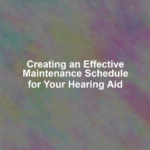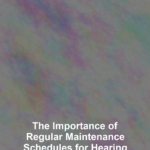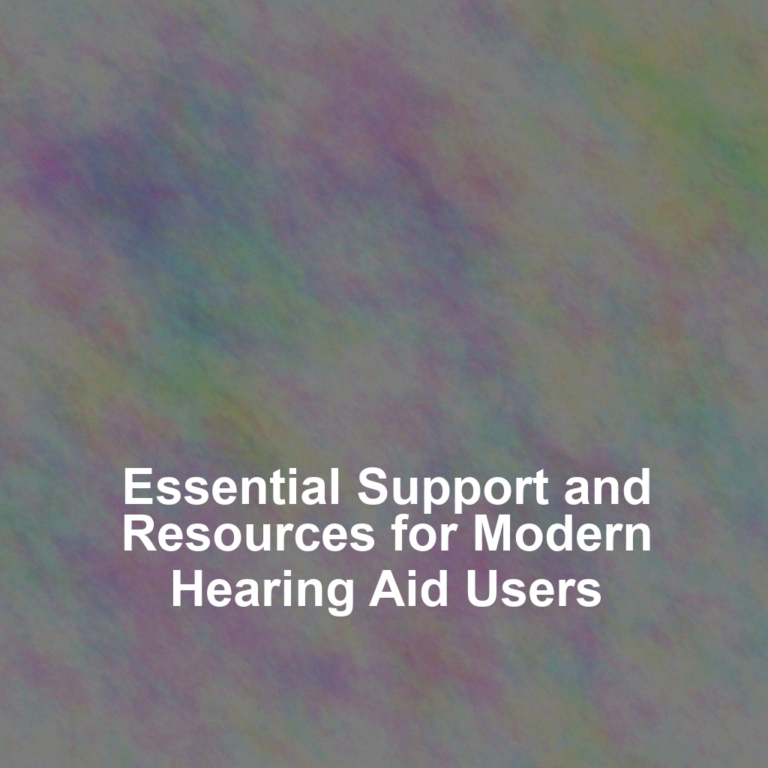While you might think that maintaining your hearing aid is a time-consuming task, creating a simple schedule can make the process quick and seamless. YouG??ve invested in a device that enhances your daily life by improving your hearing, and just like any valuable item, it requires regular care to function at its best.
LetG??s discuss how you can establish a maintenance routine thatG??s both easy to manage and effective. From the daily cleaning ritual to the annual performance review, there are several key steps youG??ll need to consider. As we explore each critical maintenance milestone, youG??ll discover the subtle signs that signal itG??s time for a check-up or a tune-up, ensuring your hearing aid remains in top condition for years to come.
Daily Cleaning Routine
Begin each day by gently wiping your hearing aid with a dry, soft cloth to remove any accumulated debris. ItG??s crucial to keep the microphone and speaker ports clear to ensure theyG??re functioning properly. Hold the device firmly but carefully to avoid any accidental drops while cleaning.
Next, check the battery compartment. If itG??s battery-powered, make sure thereG??s no moisture or battery leakage. For rechargeable hearing aids, ensure the contacts are clean and free from any corrosion. If you spot any, gently clean the contacts with a dry cotton swab.
YouG??ll also want to inspect the ear dome or earmold. If thereG??s any wax buildup, use a wax pick or brush specifically designed for hearing aids to gently clear it away. DonG??t forget to replace wax filters or guards regularly to prevent wax from entering the device.
Lastly, when youG??re not wearing it, keep your hearing aid in a safe, dry place. A dehumidifier case can be worth the investment, as itG??ll extend the life of your hearing aid by preventing moisture damage. Remember, a little care each day keeps your hearing aid in top shape!
Weekly Moisture Checks
While daily cleaning is essential for removing debris, dedicating time each week to check for moisture will ensure your hearing aidG??s longevity and optimal performance. Moisture can wreak havoc on the delicate electronics within your device, so itG??s crucial to be proactive in keeping it dry.
Start by inspecting your hearing aid for any signs of moisture or condensation. If you spot any droplets or dampness, gently wipe it away with a soft, dry cloth. DonG??t forget to check the battery compartment, as moisture here can lead to corrosion and battery failure.
YouG??ll also want to use a hearing aid dehumidifier or drying container at least once a week. These devices help pull moisture out of your hearing aid, safeguarding the internal components. Simply place your hearing aid in the dehumidifier overnight to ensure itG??s thoroughly dried out.
Monthly Sound Quality Test
Testing your hearing aidG??s sound quality monthly can help catch any issues before they affect your listening experience. YouG??d be surprised how subtle changes can accumulate without you noticing. To start, find a quiet room and eliminate background noise as much as possible. You want to be able to focus on the clarity and volume of the sounds coming through your hearing aid.
Gather a set of familiar sounds. This could be a playlist of your favorite songs, a recording of a family memberG??s voice, or everyday sounds like a ticking clock. Listen carefully. Are the high-pitched sounds as crisp as they were? Can you hear low tones clearly? DonG??t rush this process; take your time to really pay attention.
If something doesnG??t sound quite right, donG??t panic. It could be as simple as a blocked microphone or a dying battery. Clean your device according to your daily routine, replace the battery, and test the sound again. If the problem persists, itG??s time to consult your audiologist. They can diagnose the issue and ensure your hearing aid performs at its best. Remember, regular checks are your defense against unexpected hearing aid troubles.
Bi-Annual Professional Servicing
In addition to monthly sound checks, itG??s crucial to have your hearing aids professionally serviced every six months to ensure theyG??re functioning optimally. Think of these check-ups like dental cleanings for your ears; theyG??re essential for long-term performance and can help prevent costly repairs down the line.
During a professional servicing, an audiologist or a trained technician will give your hearing aids a thorough cleaning beyond what you can do at home. TheyG??ll remove any stubborn earwax or debris that mightG??ve accumulated and check for any signs of wear and tear. TheyG??ll also replace any components that canG??t be cleaned, such as wax filters or tubing, ensuring that everything is in top shape.
DonG??t overlook the importance of software updates. Your hearing aids may need firmware adjustments to keep them working with the latest technology. This is something you canG??t do on your own; it requires professional equipment and expertise.
Lastly, if youG??ve noticed any changes in your hearing or if your hearing aids donG??t seem to be working as well as they used to, this is the perfect time to mention it. Adjustments can be made to the programming of your devices to better suit your current hearing needs. Mark your calendar, set a reminder, and maintain this critical part of your hearing aid care routine.
Annual Performance Review
Every year, your hearing aidsG?? performance should undergo a comprehensive review to ensure theyG??re meeting your auditory needs effectively. This isnG??t just about a quick clean or battery check; itG??s about confirming that your hearing aids are functioning at their best.
During this annual performance review, youG??ll want to visit your audiologist or hearing aid specialist. TheyG??ll run diagnostic tests to check the functionality of your devices. YouG??re looking for consistency in sound quality, volume levels, and clarity. If your hearing aid has programmable settings or is smartphone compatible, ensure these features are working seamlessly.
DonG??t forget to discuss any challenges youG??ve faced over the year. Maybe youG??ve noticed the sound is a bit off in crowded rooms, or perhaps the battery life isnG??t what it used to be. These details are crucial for your specialist to know so adjustments can be made.
Conclusion
Now that youG??re equipped with a solid maintenance routine, you can keep your hearing aid in top shape.
Remember to clean it daily, check for moisture weekly, and test the sound quality monthly.
DonG??t skip the bi-annual servicing by a professional, and conduct an annual performance review.
Stick to this schedule, and youG??ll ensure your device performs at its best, giving you the clear sound you rely on every day.
Take care of your hearing aid, and itG??ll take care of you!










